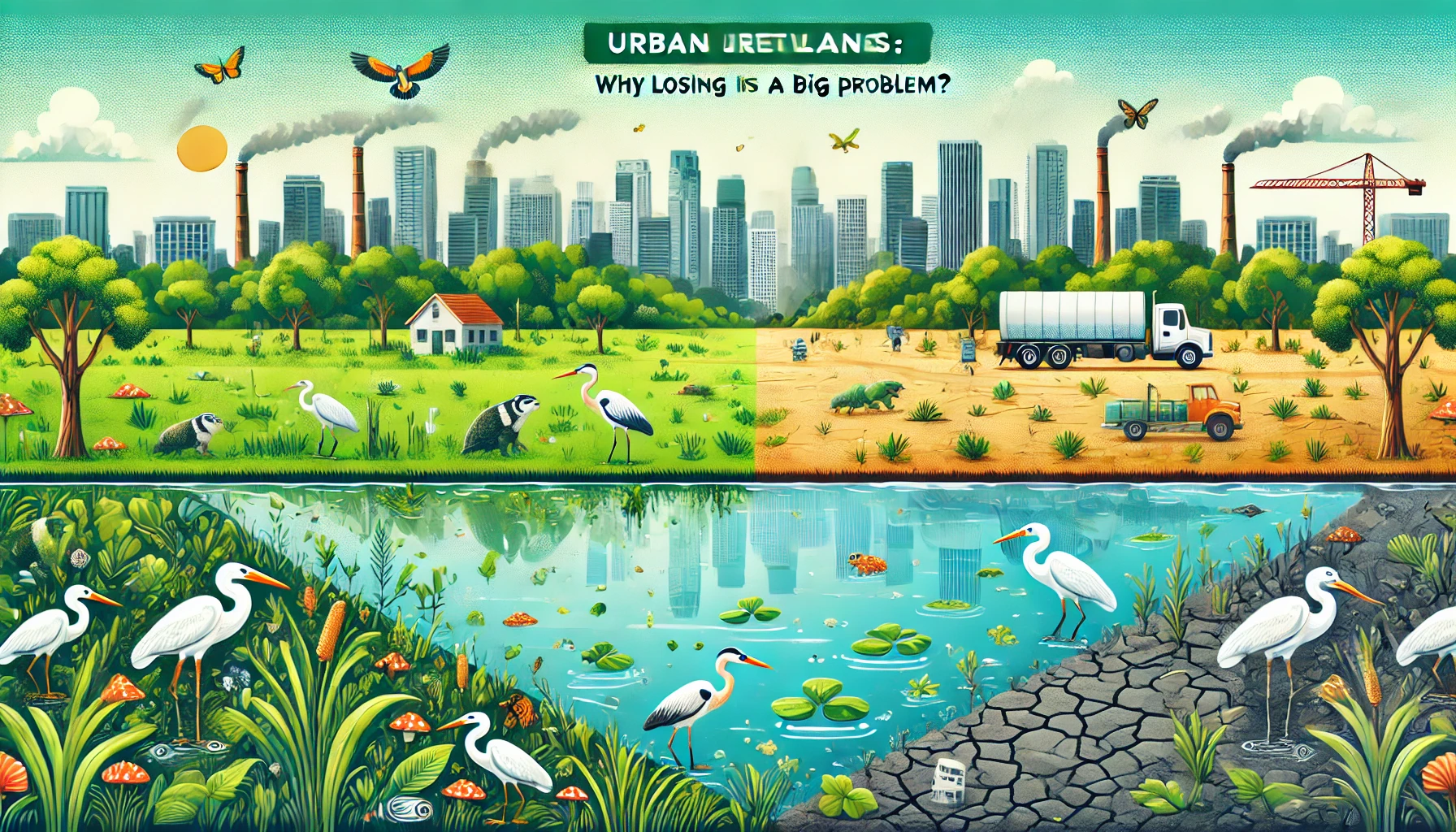Our cities are growing, expanding, and thriving. But beneath this urban success story lies an invisible crisis: the loss of wetlands. And this isn’t just an environmental issue.it directly impacts YOU
What Are Wetlands?
Wetlands are nature’s kidneys. They filter pollutants, store water, and provide a habitat for countless species. But their role doesn’t stop there. They act as sponges, soaking up excess rainwater and recharging groundwater.
In big cities, wetlands are crucial for maintaining the balance of nature and protecting us from floods
The Decline of Urban Wetlands
But urban expansion is eating away at these vital ecosystems. Wetlands are being drained and filled to make way for buildings, roads, and industries
Take, for example, cities like Mumbai, Jakarta, and Houston. Rapid development has replaced wetlands with impermeable surfaces, leaving cities vulnerable to floods.
How This Impacts Groundwater
When wetlands disappear, groundwater recharge takes a massive hit. Rainwater that would naturally seep into the ground now runs off quickly, causing water levels in aquifers to plummet.
This not only leads to water scarcity but also increases the risk of urban heat islands, making our cities hotter and less livable.
The Link Between Wetlands and Floods
Without wetlands to absorb excess rain, cities face devastating floods. Water has nowhere to go, overwhelming drainage systems and causing chaos
Studies show that wetlands can significantly mitigate the impact of heavy rains. But when they’re gone, cities pay the price
Solutions and Call to Action
The good news? It’s not too late. Cities like Singapore and New York are leading the way by restoring wetlands and integrating green spaces into urban planning
Experts agree that preserving wetlands isn’t just good for nature but essential for urban resilience.
Support local conservation projects, advocate for sustainable urban planning, and spread awareness. Remember, every small action counts.
Wetlands are more than patches of water and grass. They’re lifelines for our cities. By saving them, we’re not just protecting nature—we’re securing our future.

